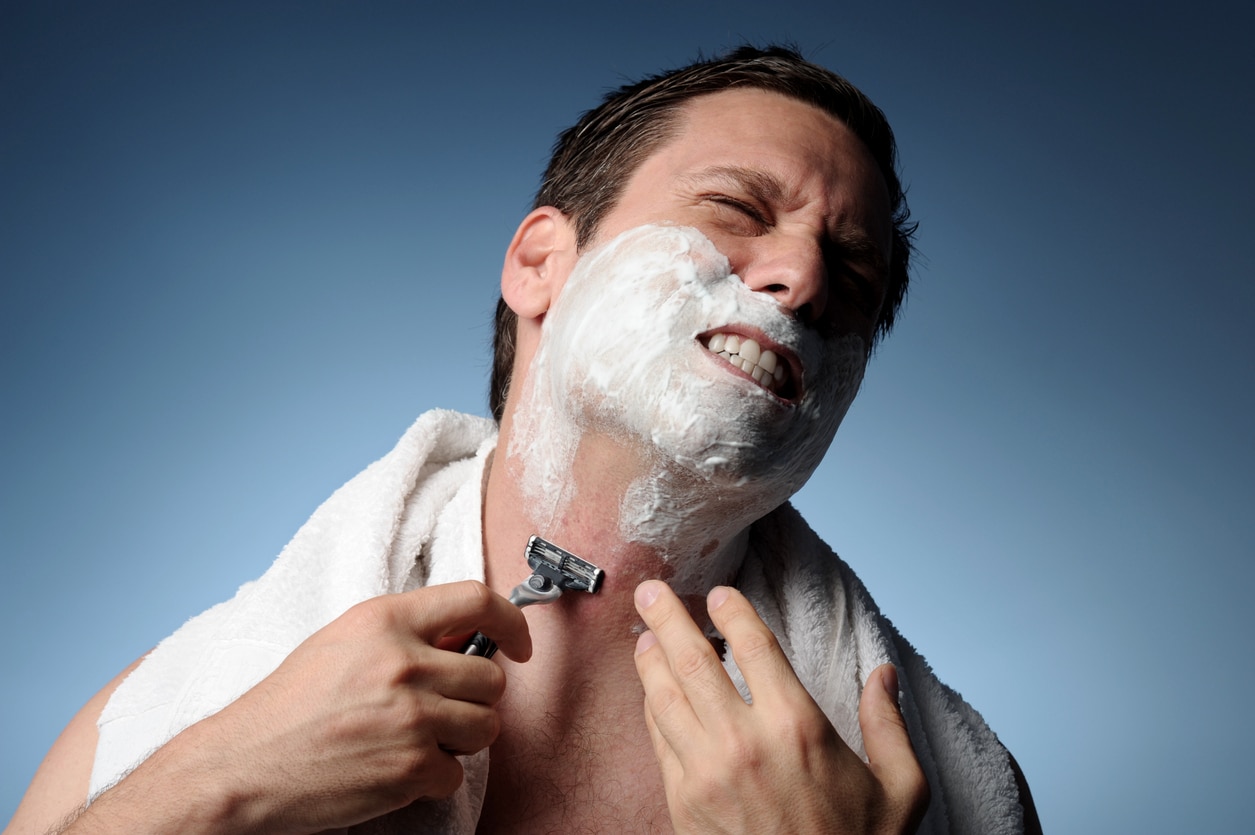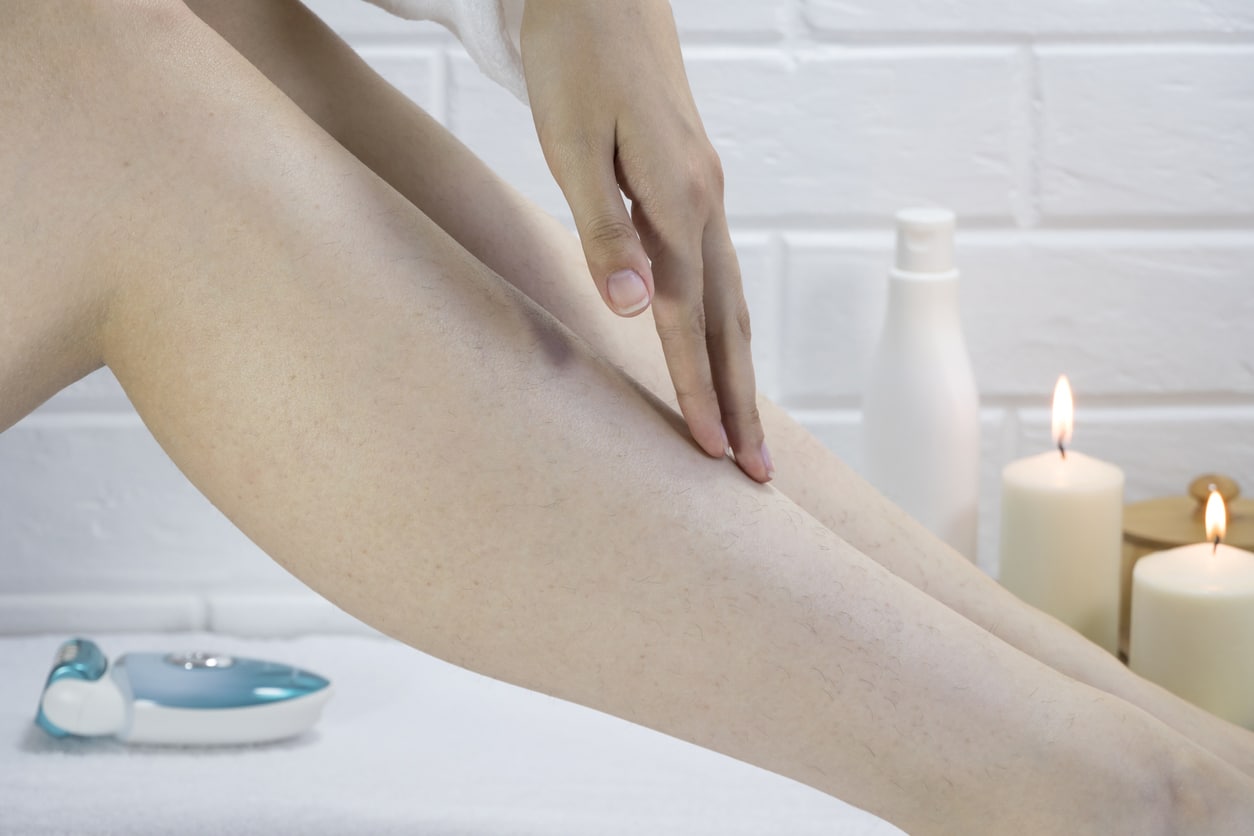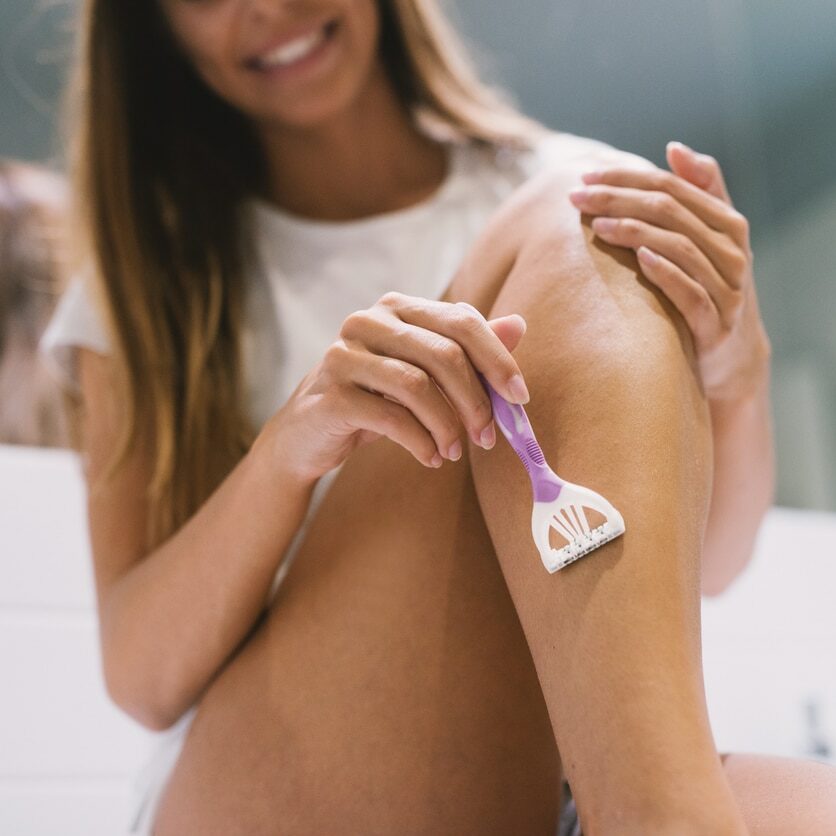Razor bumps look and feel like pimples, but they are the result of ingrown hairs. The medical term for this condition is pseudofolliculitis barbae (PFB).

Hair grows inside tubes in the skin called “follicles.” When shaved, the top of the hair is left with a sharp point. As the curly hair grows, this sharp tip may curve back and pierce the skin. The medical term for this cause of PFB is “transfollicular penetration.”
The body treats all ingrown hairs just as it would a splinter, or any other foreign object, by producing an inflammatory pimple-like bump. Often, if the condition occurs over an extended period of time, the skin will respond by producing unsightly dark spots at the sites of the PFB bumps. Unfortunately, these dark spots may take many months to fade. Since most African American men have curly, coarse hair and curved follicles, they frequently suffer from razor bumps. This is also true for people of Mediterranean descent. It should be noted that razor bumps can affect anyone who has curly hair, or has hair follicles orientated at oblique angles to the skin surface. This makes it easier for the hair to re-enter the skin. The key to controlling PFB is to minimize hair re-entry back into the skin (and subsequent inflammation) by reducing the sharpness of the hair tip, and to leave the hair tip at an appropriate length after shaving.

The best therapy is to avoid shaving and let hair grow, for instance beards for men. However, this is not always a practical solution. If you do shave, the step-by-step instructions below are recommended.
It should be noted that if your provider feels that your condition is extreme, you should let your hair grow out for several weeks before proceeding. As the hair lengthens, the shaft will act like miniature “springs” and eventually “pop free”. Your provider will prescribe topical products to improve this condition, and will also recommend the anti-PFB shaving program.


Wet your hair with warm water to soften the hair. The best way to accomplish this is to take a shower before shaving. Make sure the hair is in contact with the water for at least two minutes. This will fully hydrate your hair. Hydrated haircuts more easily, and leaves a hair tip that is not as sharp. This will decrease the chance of it re-entering the skin.

For the beard area, use a soft-bristled toothbrush in a circular motion to dislodge any hair tips that are beginning to pierce the skin. This should be done twice per day (before shaving and at bedtime). Failure to dislodge any hair tips attempting to re-enter the skin will cause “extrafollicular” razor bumps.

Lather the entire hair area with Edge or Aveeno therapeutic shave gel. These are gentle and highly lubricated products that are formulated to enhance razor glide, and minimize irritation.

Use the PFB Bumpfighter razor (American Safety Razor Company, Staunton, VA). This special razor cuts the hair at the correct length to reduce the likelihood of hair tip re-entry into the skin. Although this razor, by design, might not give you a super “close feeling” shave, rest assured it will appear to observers that you have a very close shave. Alternatively, you may wish to use an electric razor, but you want to avoid using the “closest” shave setting. Avoid triple, four and five bladed razors.

Shave in the direction of hair growth. Do not stretch the skin. You may pass an area more than once, but be sure not to shave against the direction of hair growth, or pull the skin taut. Pulling the skin taut or going “against the grain” will leave the tip under the surface of the skin, and cause transfollicular razor bumps. Try shaving with “one hand tied behind your back.”

Do not use aftershave, cologne or any other products not listed in these instructions on the shave area. Instead, apply your prescribed medication to the entire shaved area immediately after shaving. The topical medication should also be applied at bedtime. Be careful not to get any of the lotion in or near your eyes.

Always use a “collar extender” (“Stafford Collection” J.C. Penny Company) whenever wearing neckties to prevent excess friction and pressure, which can worsen the PFB condition on the collar area.

It may take a few days to several weeks for your condition to improve. Sometimes it can even take a few months to see improvement. Stay with the program and do not give up. The amount of success that you experience will be directly related to the amount of effort that you put into the program. The goal is not necessarily to have “perfect” skin, but to significantly improve your current skin condition. Many patients do experience extremely satisfying results.
It is also important to note that whenever you have inflammation of the skin, your skin can react by producing dark spots. If the inflammation is removed, the dark spots will fade with time. This may take several weeks or even months. The best way to treat dark spots is to prevent them from coming in the first place. Hopefully that is what this skin program will do for you.